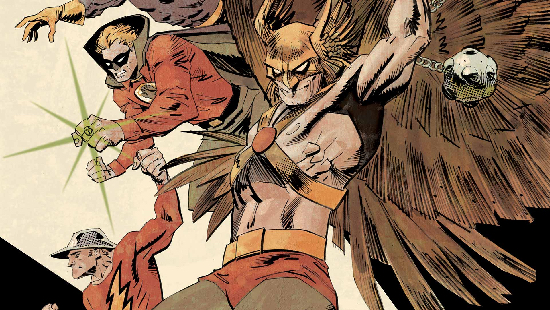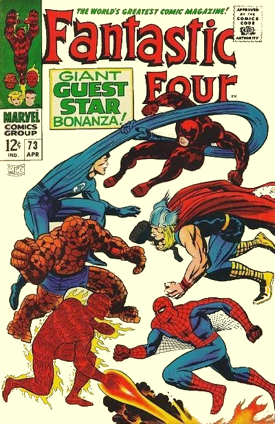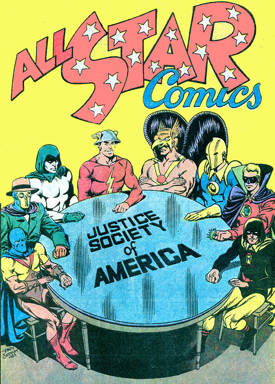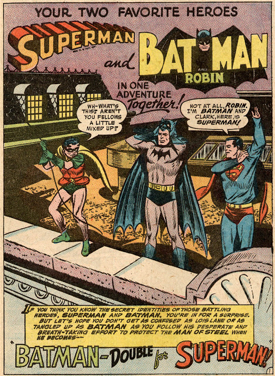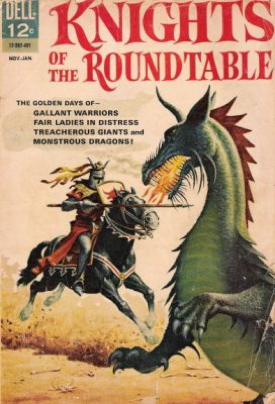Dennis O’Neil: Return With Us Now To Those Thrilling Days…
The Second World War had not yet started, at least not for the United States, when I drifted through a wall and into office space in one of the Manhattan business buildings. Anyone seeing me would assume that I was a man in his thirties, but actually I was less than a year old. Astral reality, as you might know, proceeds via different reality routes than Other reality, particularly as regards time, which would explain everything, if only you could understand it. I should also mention that I’d done a Chronological Slurp, jumped ahead a half century or so and spent a nanosecond – your time, of course – acquiring knowledge I wouldn’t learn for – your time – decades.
 I was in a conference room the likes of which were in dozens of New York offices. Long wooden table, chairs, little else. A meeting was in progress. I recognized none of the men present – they were all men – but the guy over near the door might have been a very young Sheldon Mayer and the man at the far end of the table could have been Vin Sullivan. Sullivan, or whoever he was, glanced at me, paused, and returned his gaze to the yellow legal pad in front of him. My guess is, he saw me, immediately repressed the fact that the back of my chair was plainly visible through my body, and maybe thought I was a newcomer who belonged there. After all, this was a new company plying a new product and there were probably strangers continually wandering in and out.
I was in a conference room the likes of which were in dozens of New York offices. Long wooden table, chairs, little else. A meeting was in progress. I recognized none of the men present – they were all men – but the guy over near the door might have been a very young Sheldon Mayer and the man at the far end of the table could have been Vin Sullivan. Sullivan, or whoever he was, glanced at me, paused, and returned his gaze to the yellow legal pad in front of him. My guess is, he saw me, immediately repressed the fact that the back of my chair was plainly visible through my body, and maybe thought I was a newcomer who belonged there. After all, this was a new company plying a new product and there were probably strangers continually wandering in and out.
I listened to the editors (for surely that’s what they were) discussing the success of Superman comics and the forthcoming Superman radio program, and the newer Batman, another winner. Then a bald guy asked about All-Star Comics, just that week making a newsstand debut. I gathered from the ensuing conversation that All-Star was a comic book anthology: short stories, each featuring a different hero. The bald guy seemed to think that All-Star’s multi-heroed format had no staying power and was doomed to early extinction. The rest of the group didn’t seem to know what they thought.
“Why not have the heroes all working on the same problem?” I asked everyone. “Fighting the same villain or group of villains. Make it a team effort. Don’t Americans love teams?”
“If they’re the Brooklyn Dodgers,” somebody muttered.
“It’d be a production nightmare,” the bald guy said.
The guy who may have been Sullivan said, “No, we could make it work. Interesting idea.”
That started a fresh dialogue that may have lasted until Christmas.
A few months later, All-Star Comics #3, featured The Justice Society of America, with a bunch of heroes, some of whom appeared in their own comics, gathered together to battle evil. Wonder Woman didn’t join until issue #8, but she was just a girl.
By then, my astral self was long gone. While the editors were still deep in discussion, I drifted away, into the Clutchesphere, where my astral self morphed into a neutrino and joined the cosmic dance.
My other, one-year-old self, wet his diaper.


